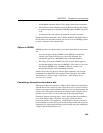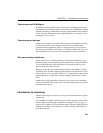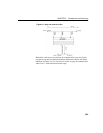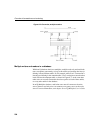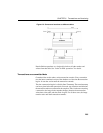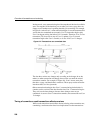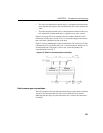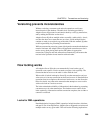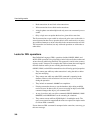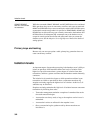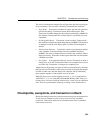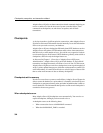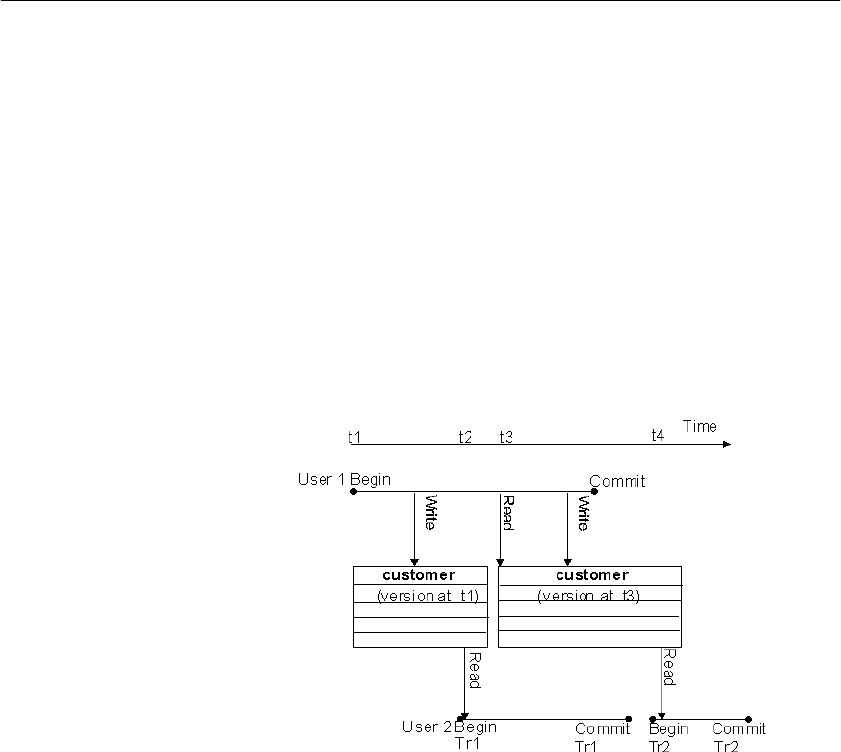
CHAPTER 8 Transactions and Versioning
297
• If a user's read transaction commits before a concurrent write transaction
does, and that user begins a new read transaction, the version remains the
same.
• If a read transaction commits after a concurrent write transaction does, any
new transaction, whether read-only or read/write, uses a new version.
Figure 8-4 on page 296 is an example of the first instance. Both of User 2's
transactions use the same version as User 1's transaction began with, because
that is the latest committed version of the data.
Figure 8-5 shows what happens in the second instance. This time, User 2's first
read transaction (Tr1) commits after User 1's write transaction. When User 2's
second transaction (Tr2) begins, it uses a new version that reflects the
committed data from User 1.
Figure 8-5: Effect of read transaction committing
Hold cursors span transactions
The only exception to the rule that transactions always use the latest committed
version is in transactions that use hold cursors. Hold cursors are treated
differently because they can span transactions. See “Cursors in transactions”
for details.



